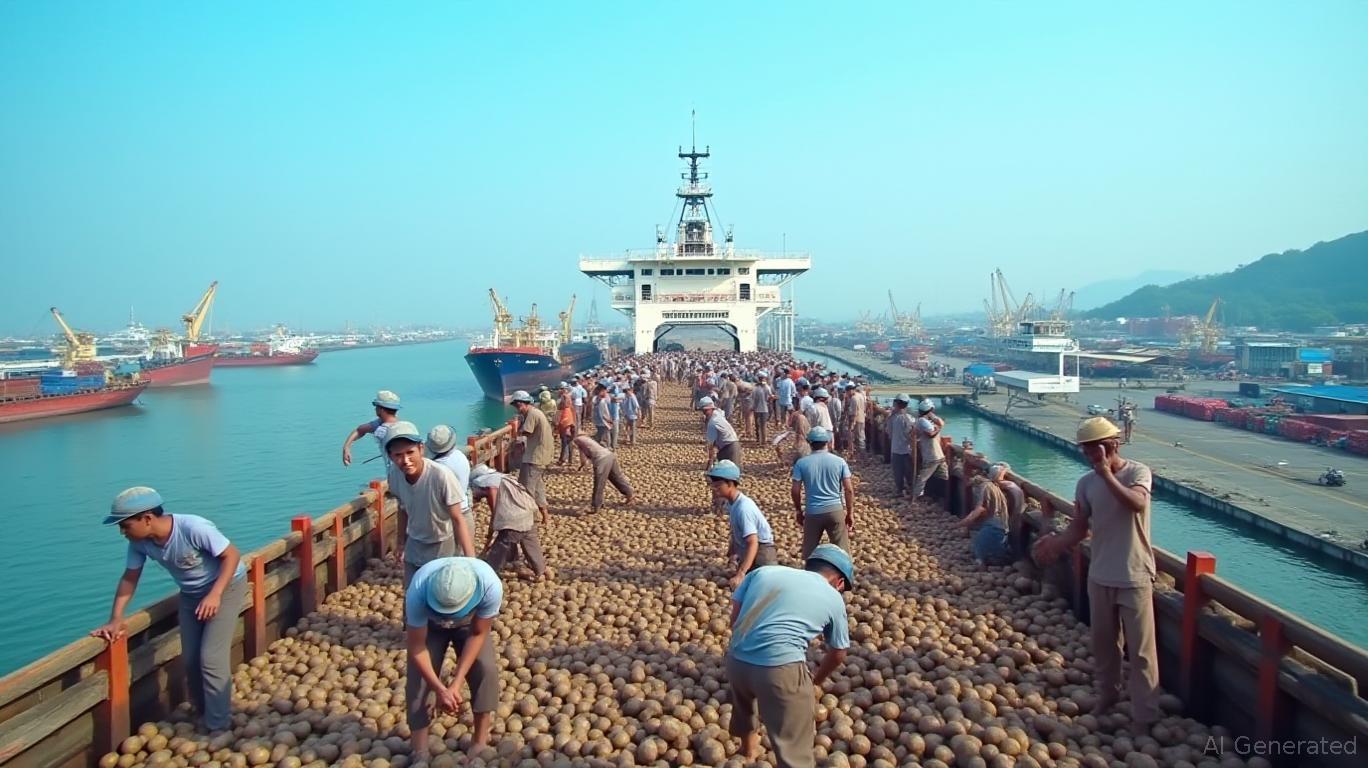Thailand's Tariff Tightrope: Navigating Trade Risks to Secure Export-Driven Growth
Thailand stands at a critical juncture as it races to avert a 36% U.S. tariff hike by July 9—a decision that could reshape its export-dependent economy. With $55 billion in annual exports to the U.S., representing 18.3% of total shipments, the stakes are existential for sectors like automotive, electronics, and agriculture. The government's formal trade proposal, aimed at reducing tariffs to 10%, has become a high-stakes gamble. Investors must now parse the geopolitical chessboard to identify opportunities amid the uncertainty.

The Tariff Threat: A Sword of Damocles
The U.S. imposed a 10% tariff on Thai exports in April 2025, but failure to reach an agreement by July 8 will trigger a 36% tariff—a move projected to slash Thailand's GDP growth to 1.5% and cause a $7 billion annual trade loss. The automotive sector, accounting for 25% of Thailand's $45.6 billion U.S. trade surplus, is most vulnerable. Auto parts exports to the U.S. grew 14.2% in May 2025, but a 36% tariff would force companies like Auto Alliance.
to relocate production or face severe margin pressure.
Sectoral Breakdown: Winners and Losers
1. Automotive: A High-Stakes Gamble
Thailand's automotive sector is the linchpin of its trade surplus. A 36% tariff would cripple its competitiveness, as automakers like Auto Alliance.BK rely on U.S. demand for components such as engine parts and transmissions. The sector's 25% contribution to the trade surplus means even a partial resolution could stabilize markets. However, until the July deadline passes, underweight automotive equities—companies may face production relocations or forced pricing concessions.
2. Electronics: Resilience with Supply Chain Risks
Electronics exports rose 9.8% year-on-year in May 2025, driven by semiconductors and printed circuit boards. While companies like HANA.BK (a key supplier to Apple and Samsung) are less directly exposed to tariffs, their global supply chain roles mean U.S. buyers could pivot to non-Thai alternatives. However, Thailand's role in EV components (e.g., batteries and sensors) offers a dual benefit: EV demand growth could offset tariff risks if the 10% cap is maintained.
3. Agriculture: Diversification as Defense
Thailand's agricultural sector remains a bright spot. Rice exports grew 15% in May 2025, and CP Group (CPALL), with its integrated logistics, offers stability. However, paddy prices have fallen below production costs, squeezing farmers. Risks include Indian rice "price dumping" and climate volatility. Investors should overweight firms with diversified markets, such as CP Group, which exports durians to China and processed goods to the EU.
The Geopolitical Chessboard: Thailand's Playbook
Thailand's proposal to the U.S. hinges on three pillars:
1. Reducing Trade Imbalances: Thailand offers to boost U.S. agricultural imports (e.g., corn, wheat) to narrow its $45.6 billion surplus.
2. Combating Transshipment: Thailand will tighten customs controls to prevent goods from China or Vietnam from entering the U.S. via Thai ports.
3. “Friend Shoring” Investments: Thailand aims to attract U.S. firms to its EV and AI sectors, creating American jobs—a key U.S. priority.
Prime Minister Shinawatra's emphasis on “Friend Shoring” signals a strategic pivot toward deeper U.S. ties in tech and data infrastructure. This could benefit firms like HANA.BK (semiconductors) and Auto Alliance.BK (EV components), if tariffs stay at 10%.
Investment Strategy: Timing the Tariff Cliff
- Overweight: Semiconductor and EV supply chain stocks (e.g., HANA.BK, Auto Alliance.BK) if the 10% tariff is secured. These sectors align with Thailand's “Friend Shoring” push and have global demand tailwinds.
- Hold: Agriculture firms like CP Group, which benefit from diversified markets and Thailand's unmatched position in rice and durian exports.
- Underweight: Automotive parts until post-July clarity. Companies may face margin erosion or forced relocations, making them risky until negotiations conclude.
Risks and the July 9 Deadline
The July 9 deadline is non-negotiable. If talks fail, Thailand's GDP could drop 1.5%, and the baht may weaken further, compounding inflation. Meanwhile, legal battles loom: the U.S. Court of Appeals is set to rule on the tariffs' legality by late July. A favorable ruling could delay or reduce the 36% threat, but uncertainty remains.
Conclusion: A Wait-and-See Approach
Investors should avoid aggressive bets until after July 9. Monitor Thailand's trade surplus data (due in August 2025) for post-tariff clarity. Firms with tariff-resistant revenue streams (e.g., EV components, global agriculture) or exposure to U.S.-backed “Friend Shoring” projects will likely outperform. For now, prioritize flexibility—position cautiously in semiconductors and agriculture, but stand ready to pivot when the geopolitical fog lifts.
The clock is ticking. The stakes are clear. Thailand's trade proposal is not just about tariffs—it's about securing a future in a world where geopolitical trade dynamics define economic survival.

Comments
No comments yet